The Effects of A Tight Pallet Market
August 25, 2021 | 8 min to read
Manufacturers of wooden pallets and alternative materials are adapting to challenges posed by the COVID-19 pandemic, including labor shortages and lumber availability. The sector faces high demand and rising prices, prompting exploration of alternative materials like reusable plastic pallets. According to Brent McClendon from NWPCA, while wood remains dominant, companies now increasingly consider diverse options to ensure supply chain resiliency. Heightened interest in pallet rentals reflects ongoing market tightness and evolving consumer needs amid purchasing shifts.
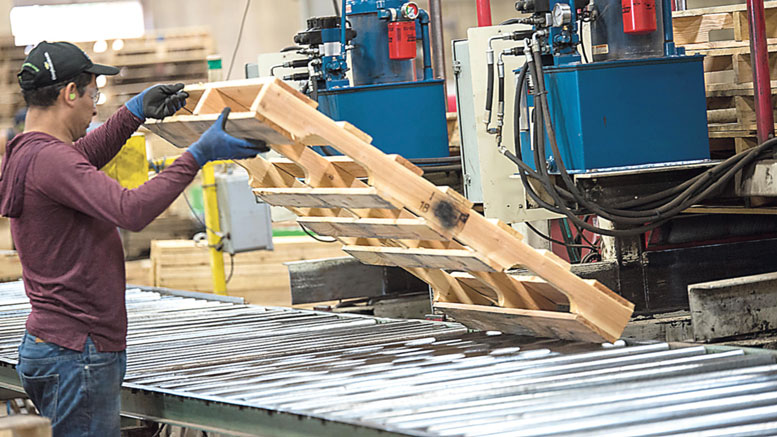
PHOTO COURTESY PLA
Wooden pallet and alternative material manufacturers adapt to the shifts brought on by the COVID-19 pandemic.
Originally printed in the July 2021 issue of Produce Business.
Today, pallet providers are addressing challenges shared by many industries – transportation woes and limited worker availability – as well as unique issues, particularly a labor shortage in the forestry industry, which generates the raw material for the most common product constructions.
While pallet providers work through the lasting effects of the COVID-19 pandemic, they continue to look for ways to serve clients navigating a marketplace in flux. Finding new wood sources, using alternative manufacturing materials, and pooling rentals are positive actions leading to better supply chain resiliency across the board.
Brent McClendon, president and CEO, National Wooden Pallet & Container Association (NWPCA) Alexandria, VA, says circumstances have led to complexities. Still, the wooden pallet sector, which produces a product used by 90% of shippers, is adapting to the shifts brought on by the pandemic including limited labor and lumber availability as well as transportation issues.
Gary Frantz, a spokesperson for Peco Pallets, Irvington, NY, says as retailers who stocked essential products started shipping in everything they could during the demand surge as the coronavirus struck the U.S., the pressure turned up on pallet suppliers.
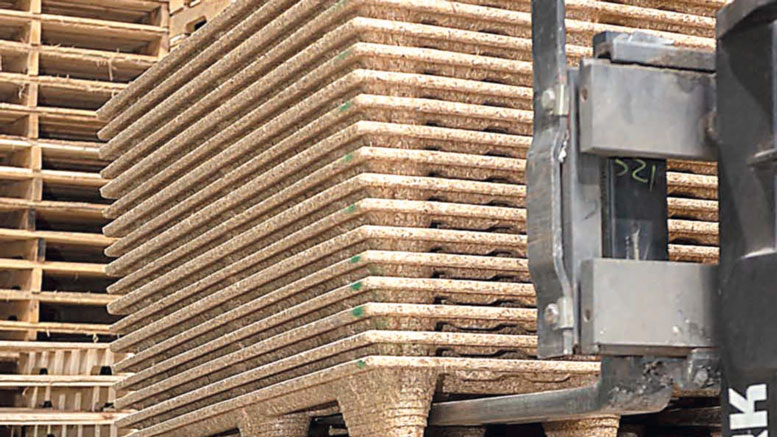
“That market pressure coincided with a record shortage of lumber and high lumber prices. Together, it created a perfect storm: high demand, low pallet inventory, and extreme high prices to make new pallets. Now as restaurants are reopening, foodservice demand is rising again, yet in the U.S. we are still seeing a sustained uptick in demand from grocers and club stores. And throughout the pandemic, we still saw the same seasonal demands from produce growers. And to be clear, these are macro-economic conditions that are affecting all businesses and pallet providers, not just Peco. All in all, it’s as tight a market as I’ve ever seen.”
Still, Frantz states, wood is still the most economical solution long-term. While the biggest impediment is lumber supply, he says the pallet industry is seeing some recent easing in lumber pricing and increases in supply as more sawmills come online and their production capacity improves.
NWPCA’s McClendon says sawmills in the U.S. have been increasing capacity to meet strong consumer demand and the needs of a stressed supply chain.
SUPPLY CHAIN RESILIENCY
For his part, Tim Debus, president and CEO of the Reusable Packaging Association (RPA), Tampa, FL, points out, “As we emerge from the pandemic, one phrase we keep hearing again and again is the need for ‘supply chain resiliency.’ Companies are asking how they can best prepare for the next major disruption and ensure their supply chains remain as stable as possible when external forces bring chaos. Reusable pallets are gaining attention as one way companies can gain a ‘buffer’ from outside forces. Tightness in both the labor and raw materials markets is particularly disruptive to the pallet market right now.”
He suggests that some challenges can be mitigated with reusable pallet systems, particularly pooled pallets, whether internally or third-party managed, to maintain appropriate pallet inventories through disruptions.
Jason Adlam, vice president, new business development of CHEP, Orlando, FL, says wood remains the critical material in pallets even as the market adapts to the times. The COVID-19 crisis actually provided something of an opportunity for CHEP to use the “unique situation to better understand customer needs, evolving supply chain dynamics and market conditions to evaluate what has worked and what hasn’t, and what process improvements are needed to succeed in what could be the new normal,” Adlam says. He adds, “Wood is still the predominant material used in the industry with millions of pallets available on the market today. Plastic pallets have received some attention lately, with Costco’s desire to have pooled plastic pallets, which will take a bit of time to do given the overall cost and complexity involved.”
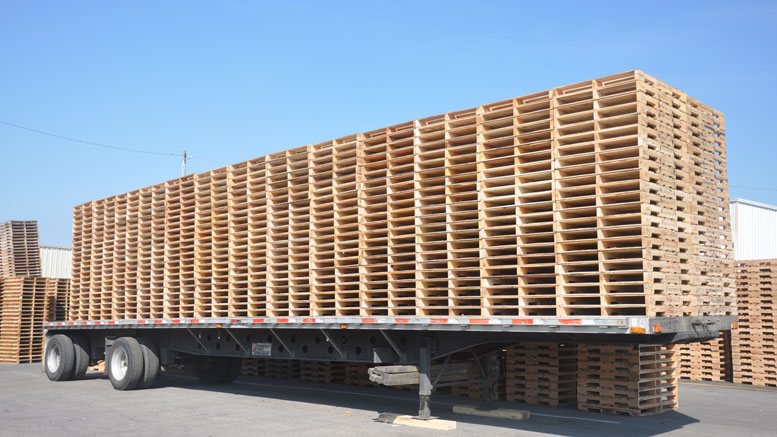
It’s common knowledge that the pandemic’s turmoil affected the U.S. supply chain, and inevitably, the pallet sector.
“Many sawmills had scaled back production during COVID-19,” says Gary Sharon, executive vice president, Litco International, Vienna, OH. “Now that business has started to rebound, it is not possible for them to rapidly ramp up production to meet the rapid increase in demand especially with a shortage of willing workers. Due to a shortage of lumber, prices have increased sharply. As a result, some pallet makers cannot get or afford the wood.”
As a result, he notes, pallet suppliers have had “to either raise prices, or reduce, or stop production, causing many pallet buyers to scramble for supply.”
And though the 48-x 40 inch is the most popular size, there is a demand for many other sizes.
Although they are supply stalwarts in their most familiar forms, pallets are going through an evolutionary process. For example, Litco specializes in Engineered Molded Wood pallet solutions, Sharon says, an alternative built from wood chips, a material that isn’t as susceptible to market swings that may affect new and recycled solid-wood pallets.
ALTERNATIVE MATERIAL OPTIONS
Although wood pallets continue to dominate, plastic, wood composite, metal corrugated/cardboard and other formats have widespread use, though in smaller proportions. The difficulties lately experienced by producers have driven companies purchasing wood pallets to consider other materials, Sharon says. “The outcome is that many pallet users are desperate and willing to buy anything that might work for their applications. They are now looking at alternative types of pallets they would not have seriously considered in the past,” he says.
Evolving circumstances have made plastic pallets more attractive to users based on particulars of need, preference, and sustainability objectives. Alison Zitzke, senior product manager, pallets, ORBIS Corp., Oconomowoc, WI, says supply chain disruptions have prompted additional demand for reusable pallets. “At ORBIS, we are seeing reusable plastic pallets gaining traction and companies are pushing up conversion timelines,” Zitzke says. Even so, in many cases, it’s not necessarily a question about which material is best but which materials are best in which uses, she adds.
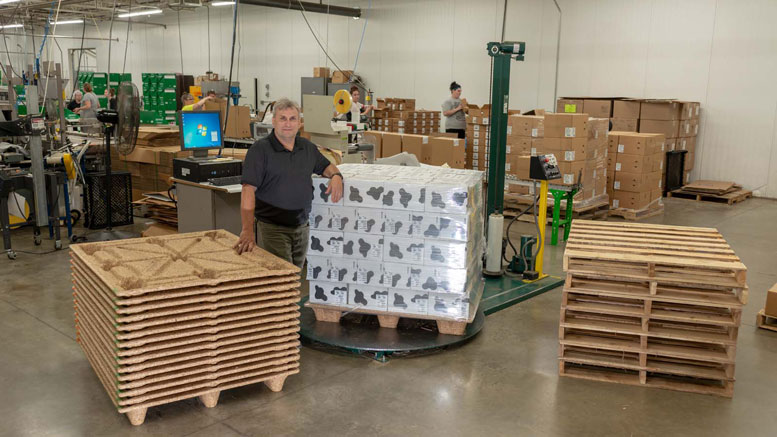
“Because pallets are in high demand, we anticipate a continued robust market for their manufacture,” Cyndi Johnson, sales ops and marketing director, iGPS Logistics, Orlando, FL, says. “Increased lumber costs have made both the production and purchase of new wood pallets more challenging. She adds, “Furthermore, investors are putting a stronger focus on ESG factors – Environmental, Social, and Governance – in evaluating plans for business growth, which has contributed to the desirability of sustainable plastic pallets.
Pallets from iGPS Logistics are manufactured primarily from post-consumer resin and can be recycled into new pallets at the end of their useful life,” Johnson asserts. “They are also more durable and can take many more trips than the average wooden pallet before needing to be recycled into a new pallet.
“With wood prices increasing, plastic pallets are in higher demand than ever,” agrees Michala Meyerhofer, marketing manager, TriEnda, Portage, WI. This shift in the market is making clear not only the benefits of plastic material handling solutions, but also the environmental impact that the move away from wood pallets could have.”
Today, she says, “demand for thermoformed material handling solutions has grown extensively. With new technology to make material handling solutions lighter, cheaper, and more durable than ever, the plastic pallet manufacturing process is becoming more automated, the demand is growing, and the distribution of our products is reaching new industries every year.”
[EDITOR’S NOTE: See Part II of this article online at ProduceBusiness.com, which will cover Pallet Innovation, including design techniques, recyclable materials, and “smart” IoT pallets linked to the cloud]
Is It Time to Jump into the Pallet Pool?
Renting pallets, or becoming part of a pallet pool, is an option that can have advantages. Cyndi Johnson of iGPS Logistics says she is seeing fewer companies wanting to invest in their own fleet of pallets, which can be a costly and inefficient enterprise that essentially requires large players to maintain an entirely separate supply chain just to manage these assets. She explains, for these companies, pallet pooling – where a closed ecosystem of pallets is used, maintained, and reused – is typically a desirable option.
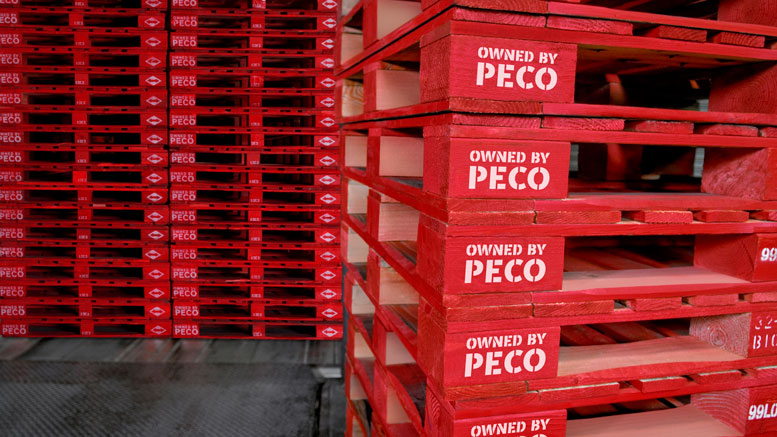
“Over the past 30 years, there’s no doubt that pallet renting has grown and become more prevalent,” says Gary Frantz of Peco. “And in today’s tight market, rental pallets are in demand more than ever before.” He adds, the key to getting the best value from a pallet rental program is by calculating total trip cost and total cost of ownership. “Rental pricing is typically done on a per-turn basis,” he says, “with other variable costs for items like transportation cost and fuel.
The rental end of the pallet business has been advancing slowly, Alison Zitzke of ORBIS Corp. says, but has worked out its own space. “Renting has been popular for larger retailers using very large fleets of pallets in their system, with a network of known suppliers. If they want more control over their fleet, they tend to buy. Right now, customers that are dealing with pooled/rented pallets may not have access to them because there aren’t enough wood pallets in the market,” she says.
Renting is best in specific circumstances, Gary Sharon of Litco says. “Pallet renting is popular when tracking, tracing, and recovery of the pallets is possible. Otherwise, the penalties of pallet loss to the shipper outweigh the cost of purchasing.
6 of 24 article in Produce Business August 2021

